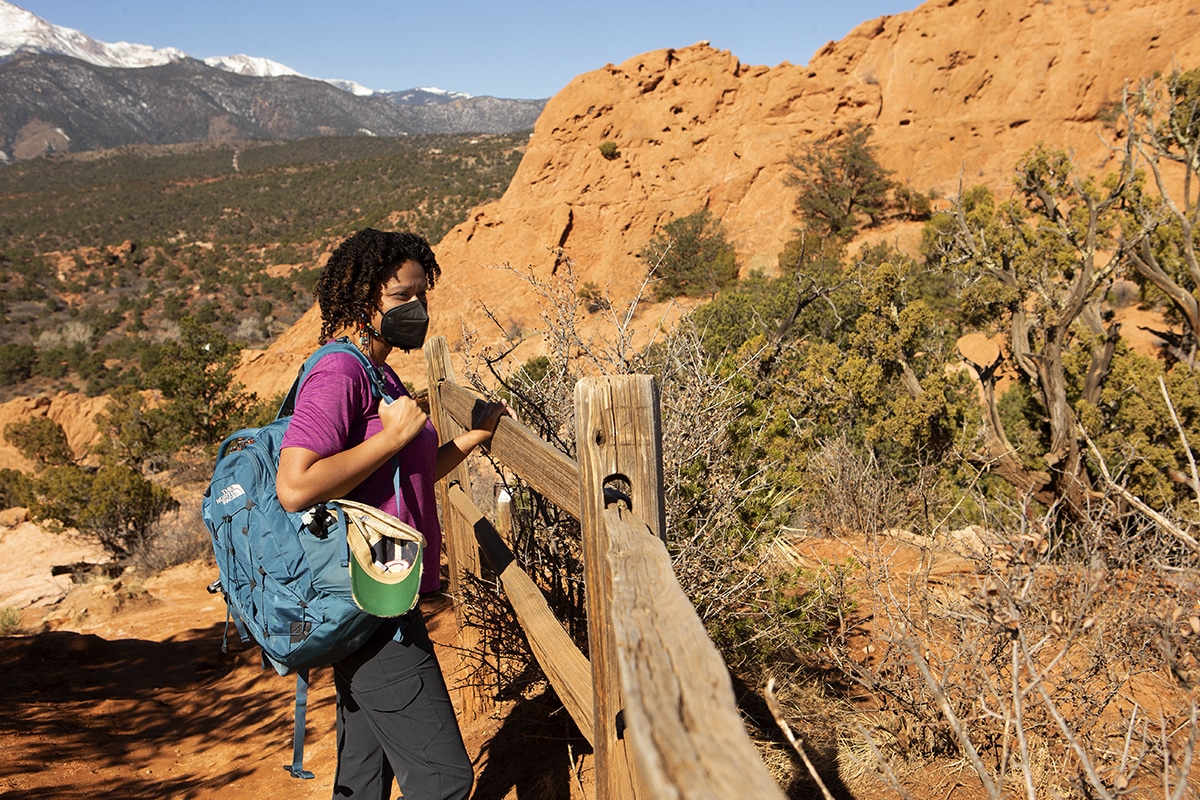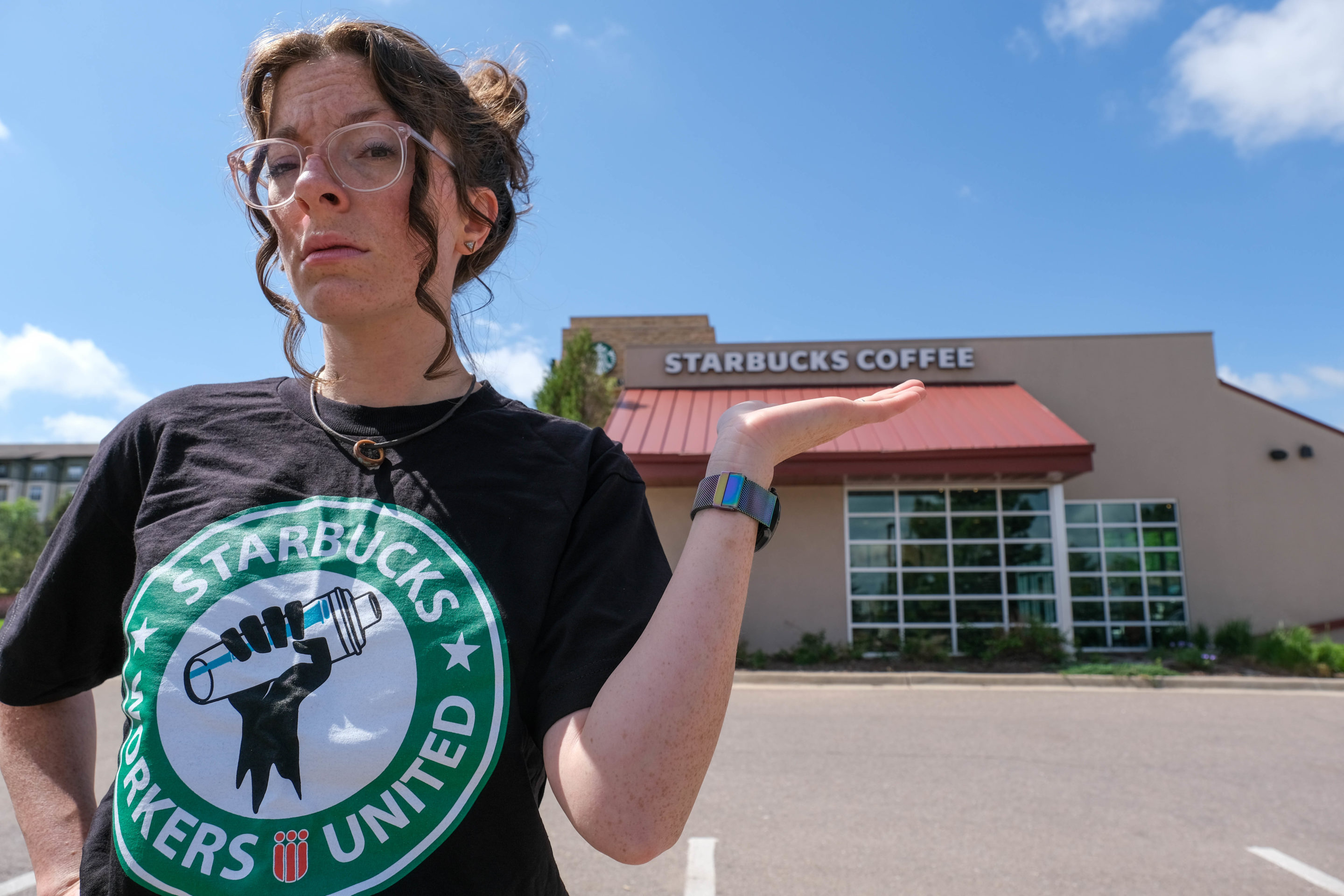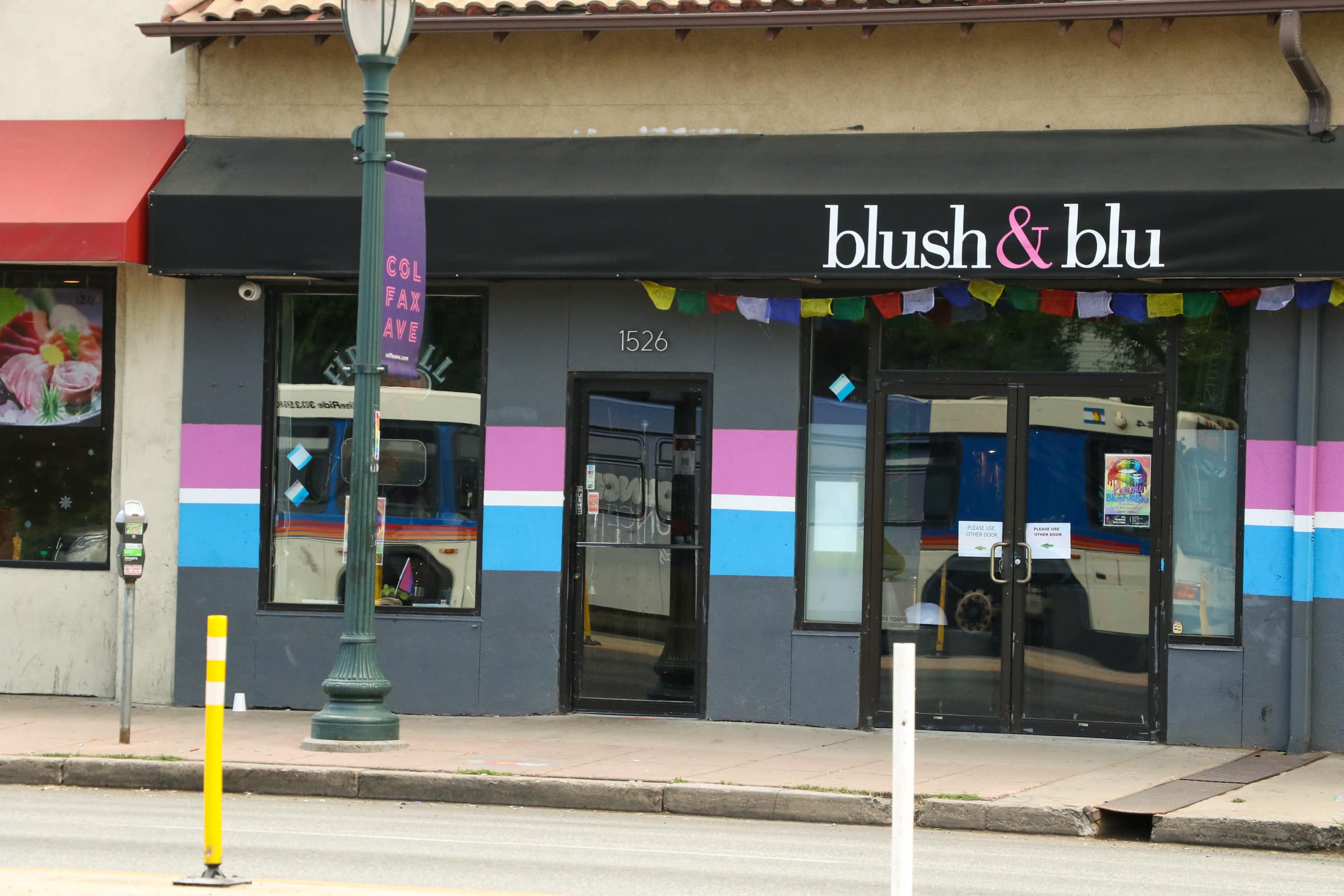//Danielle Moore, Colorado Springs resident, stops on her hike at Ridge Loop Trail in Garden of the Gods on March 20, to take in the view. Photo by Ali Mai | [email protected]
REI’s litany of media experienced a tremor in 2018. After public condemnation, the company began showing more women, more BIPOC, and “less labels, more sizes.” The female-focused #forcesofnature campaign became present on Instagram while a marketing manager was hired to spearhead the BIPOC directed “For All” campaign.
Despite the move, the change was not seismic and many think, still not enough.
“While it doesn’t stop me, I think [lack of] representation plays a role in making people feel unwelcome,” said Danielle Moore, a former long-time Denver resident who currently lives in Colorado Springs. “I know when I look at an REI ad, the beauty of nature is prevalent but so are the white men and women. I don’t see anyone who looks like me. Maybe if more people in the Black community could see others doing it, they’d be more inclined to join in.”
Since 2018, REI paid content has shown up in The Atlantic promising inclusion. Advocacy groups like Outdoor Afro have started getting attention and expanded representation in social media. Outdoor influencers like Pattie Gonia continually use their platform to highlight BIPOC adventure content creators.
But a lack of inclusion extends beyond flashy media campaigns. From whitewashed imagery to the cost of gear to vestiges of segregation, Colorado’s outdoor lifestyle is projected as inaccessible or unwelcoming for many.
“As a whole, [the outdoor industry] is catered to the Instagram influencer definition of what makes an outdoorsy woman,” said Ashlee Kuma, a Denver resident who identifies as both a Pacific Islander woman and plus-sized. “When you see pictures that don’t look like you or when retailers don’t carry body size-inclusive items, you can feel cut out of the game.”
As Kuma points out, REI and other retailers maintain blindspots such as the logistics of gear required to fit in specific ways. From backpacks that need to sit squarely on the hips to snow gear that must breathe in the right places, the needs of plus-size outdoor enthusiasts are slipping through the cracks.
“When you’re at REI being fitted by someone much smaller than you who doesn’t know how to adjust things to your body type or find the right gear, it’s a barrier,” Kuma said.
Writer James Edward Mills coined the term, “the adventure gap,” to describe the racial divide between those who are enthusiastically welcomed in outdoor activities and those who aren’t. According to research conducted by the National Parks Service, ninety-five percent of visitors to national parks are white. Contrary to stereotypical beliefs, this lack of diversity is not because BIPOC communities don’t enjoy the great outdoors as much as the white community.
The Outdoor Industry Association’s 2018 Outdoor Participation Report shows that 34% of Black Americans, 49% of Hispanic people and 51% of Asian Americans in the U.S. ages 6 and up participate in outdoor activities. And while the number of Black and white Americans over the past five years dipped 0.4%, Asian and Hispanic participation has risen 0.9% and 1%, respectively.
Perhaps the gap is tied to institutionalized legislation that made outdoor spaces, like national parks and forests, inaccessible to BIPOC communities. The policies of Jim Crow segregation were still in place when President Woodrow Wilson signed into law the creation of the National Park Service on Aug. 25, 1916. From campgrounds to picnic areas at public sites such as Rocky Mountain National Park, Black citizens hoping for a scenic reprieve were told that nature was “For Whites Only.” It wasn’t until the signing of the 1964 Civil Rights Act when parks were actually for all.
BIPOC women have led the expansion of outdoor inclusion through their own campaigns. Latria Graham wrote in Outside Magazine that Black hikers feel unseen and disregarded.
“African Americans don’t always go where white people do. Swimming? Pools used to be segregated in the South and other parts of the country, so it wasn’t easy to join a team and practice your freestyle kick. Skiing? Not in the cards if you’re poor and live in an inner-city. Beaches? In many places, blacks were banned by law or custom,” Graham wrote. “And national parks weren’t especially welcoming, either; many were created as an escape from urban sprawl, at a time when urban was shorthand for Blacks and immigrants.”
The white-washing of history has contributed to this racial faultline, one of the most gargantuan being Mount Evans. In 2020, the Southern Cheyenne and Arapaho tribes petitioned to change the name due to Evans’s ties to the Sand Creek Massacre. The tribes were forced out of Colorado following the massacre. The hope is to rename the peak Mount Blue Sky to reflect one of the original caretakers of Colorado, the Blue Sky People commonly known as the Arapaho.
While marketing initiatives and renaming is one way to address this inequality, it’s not the only way. Incorporating the importance of being outdoors into school systems is essential for physical and mental growth. With schools more involved in the outdoors, more opportunities arise for children of color and children from low-income families to not only learn more about nature but access it.
“My love of nature started when I was younger,” Moore said. “The school that I went to had an adventure teacher who would take us tubing, to rivers, hiking, etc.”
Another way to increase diversity in the outdoor space is through socialization. From Facebook groups to outdoors organizations dedicated to creating support systems for women of color stepping into the outdoors.
“It can be intimidating to go out hiking or into the wilderness by yourself and it’s not always safe,” said Vondae Donaldson, a now-Denver resident who grew up on the east coast. “So, creating a support system can help get more women out on the trails.
Groups like Outdoor Afro, Native Women Wilderness, Hunters of Color, The Venture Out Project, and Latino Outdoors are all working toward the goal of making the outdoors more inclusive and safe for all. By joining these groups, women are coming together to close the gap just a little more with each hike.
“I didn’t grow up with access to the outdoors in the same way I have now,” Donaldson said. “It’s a gift. For any woman who is doubting if it’s a place for them, just get out there. Grab your leggings, sneakers, find a group and just get out there.”
Enjoyed this story? Help us keep the lights on! Supporting local press ensures the stories you want to read keep coming, become a member for free today! Click here.





0 Comments